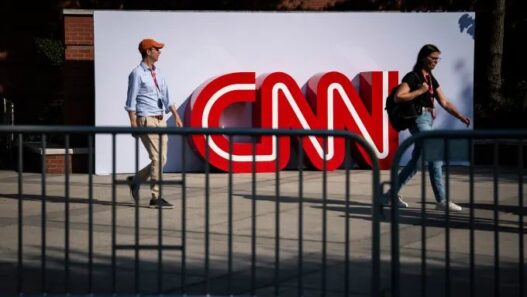CNN, one of the most popular news websites in the world, is starting to ask some of its visitors to pay $3.99 a month for access.
On Tuesday, the news organization is laying the first bricks in a so-called paywall that should, over time, help foot the bill for CNN’s journalism around the world.
“Starting today, we are asking users in the United States to pay a small recurring fee for unlimited access to CNN.com’s world-class articles,” Alex MacCallum, CNN’s executive vice president of digital products and services, wrote in an internal memo outlining the plan.
The average visitor to CNN’s website, who may only read a few articles a month, will not be prompted to pay at this time. “Only after users consume a certain number of free articles will they be prompted to subscribe,” MacCallum explained. “In addition to unlimited access to CNN.com’s articles, subscribers will receive benefits like exclusive election features, original documentaries, a curated daily selection of our most distinctive journalism, and fewer digital ads.”
MacCallum and her boss Mark Thompson, the chairman and chief executive of CNN, are both veterans of The New York Times, which is widely envied in the news business for its success in converting online readers and gamers into paying subscribers.
In a memo over the summer, Thompson said CNN would “create best-in-class, subscription-ready products that will provide need-to-know news, analysis and context in compelling new formats and experiences, starting with CNN.com’s first subscription product launching before the end of 2024.”
That paid offering is what’s launching on Tuesday – in a preliminary form that will expand in the months ahead. “Over time, we will invest in ways to better meet our users’ needs and expand our aperture to engage and serve new audiences,” MacCallum wrote Tuesday, hinting at “new products and businesses” in the future.
For brands like CNN that make most of their money from cable television, the challenge is clear: to develop new digital revenue streams that can offset declines in legacy TV.
Under previous management, CNN developed a streaming video product called CNN+ in 2022 to create direct-to-consumer relationships with fans of the network. That product, launching just days before a new corporate parent, Warner Bros. Discovery, took control and looked for cost savings, was doomed, however. CNN+ was cancelled within a matter of weeks.
CNN now intends to generate subscriptions with its core offerings. Some content, though, will remain fully accessible without a subscription, including the CNN homepage; breaking news live stories; standalone video pages; and sponsored articles.
Thomson Reuters, the world’s largest international multimedia news provider, on Tuesday announced that it will also launch a paywall for its website and app in early October. The news outlet shared that subscriptions will be available worldwide for a $1 weekly fee.
“This new subscription plan ensures Reuters can expand the reach of its award-winning coverage at an affordable price, while allowing us to further invest in our reporting and products for subscribers,” Reuters President Paul Bascobert said in a statement.
Digital subscriptions have been a promising but challenging business for other news organizations. A recent survey by the Reuters Institute for the Study of Journalism at the University of Oxford found that only about one in five American consumers are currently paying for online news.
Greg Piechota, a researcher-in-residence at the International News Media Association, said there is ample room for the industry to grow. “There is no subscription ceiling for online news,” Piechota said. “Imagine that you are standing in front of the One World Trade skyscraper in downtown New York, and looking up to the top observation deck. Most news brands have reached only the first floor, and the 100th floor is far away up in the clouds.”
The Times is the highest by far, he said, with roughly 10 million digital subscribers.
Smaller news organizations have run up against subscription fatigue and other sources of resistance – a reflection of the fact that virtually all news coverage was published for free when the World Wide Web was popularized in the 1990s.
Media companies large and small have spent the past decade or so trying to change the norms around access to news.
Still, many readers and viewers don’t connect the dots between personally paying for news and helping to sustain the industry as a whole. Piechota said “unfortunately, based on surveys, most consumers across the world are not aware of the financial challenges faced by the commercial news media.”
“But when they hear about the industry’s critical financial situation,” he said, “their willingness to pay for journalism is the highest, studies showed.”
CNN’s Liam Reilly contributed reporting.





